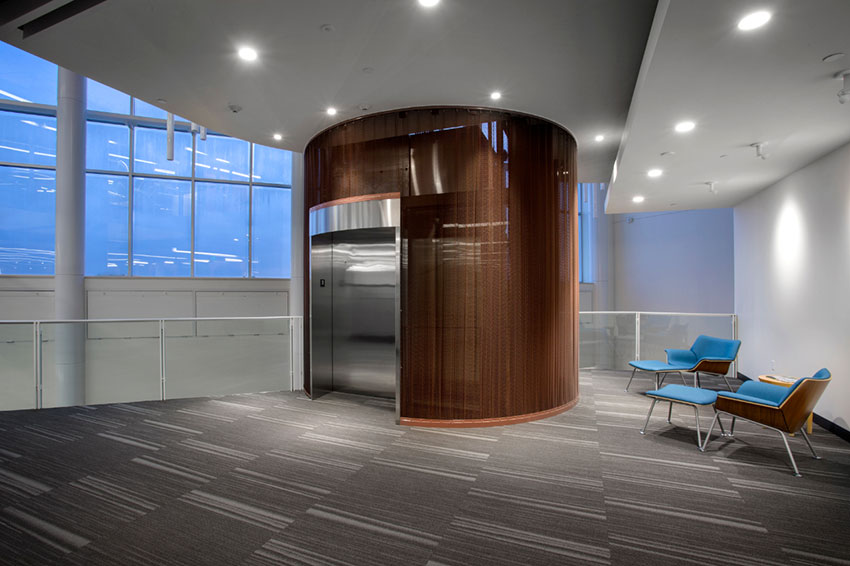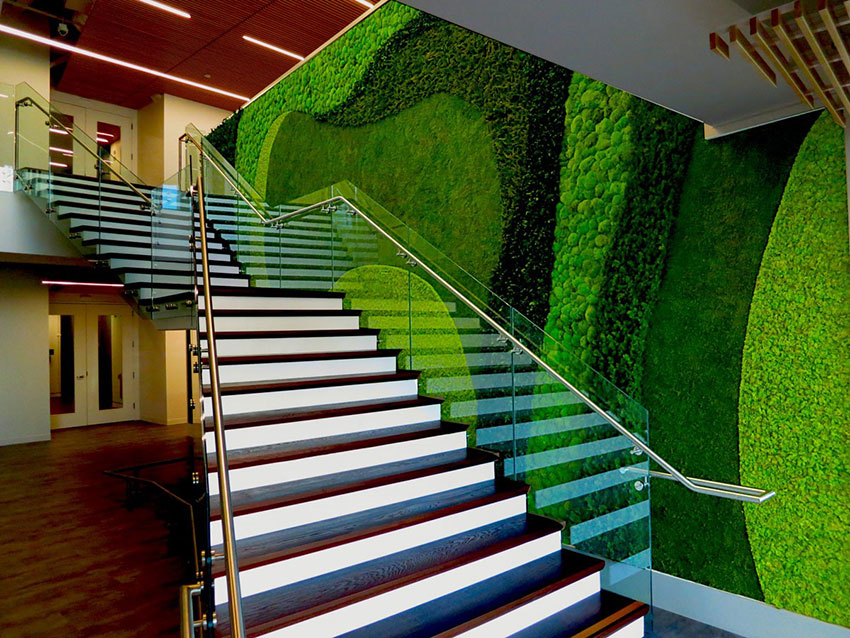It’s a Material Thing
Additional Certification Tools
When addressing indoor environmental quality, knowing with certainty what is in each possible product becomes crucial. Successfully specifying materials is a multifaceted assignment, requiring the best information about a number of factors. However, verifying that the best materials and products are going into a building sets the foundation for achieving green and healthy building goals.
The Health Product Declaration (HPD) Open Standard, Mindful Materials, and UL Environment’s GreenGuard offer additional, independent reporting tools that disclose the precise material make-up of products. The Health Product Declaration (HPD) Open Standard is a process for the accurate, reliable, and consistent reporting of product contents and associated health information. The mindful MATERIALS Library is a multi-stakeholder initiative developed by the building industry for the building industry, providing a common platform to access and clearly communicate transparency and optimization information for building products. UL GreenGuard certifies products for chemical emissions, with certifications based upon building type.
A building’s materials create a product portfolio designed to take on the biggest sustainability and development challenges. Each product should offer carefully designed, innovative, and sustainable solutions for occupant comfort, safety, and for the benefit of the environment. However, far from being design constraints, using third-party-verified materials that support IEQ goals create beautiful additions to any project. New products are bringing a wealth of aesthetic, health, and wellness benefits to the projects in which they are used.

Photo courtesy of Cascade Architectural
Third-party certified products are tested and certified through surveillance and verification of continued compliance. Any product claims have been verified independently, rather than relying on a manufacturer’s word.
Health – Antimicrobials And Copper Coiled Wire
Besides general health measures, like choosing products that protect indoor air quality (IAQ), the COVID-19 pandemic has focused attention on the ways that viruses and bacteria can be spread or contained. With the enhanced focus on the transfer of germs and bacteria, can the surfaces occupants interact with daily play a meaningful role in their health? Even more, can building materials and products step into this new arena by shortening or reducing the amount of time that bacteria or viruses survive on surfaces that people touch?
The most prevalent strategy to combat this problem is to use materials that kill or stop the growth of microorganisms on as many touchable surfaces as possible. Antimicrobials are a class of chemicals designed to kill or inhibit the growth of microbes. Antimicrobials are commonly used in soaps and building materials, including countertops, paints, and doorknobs. However, there are definite risks associated with chemical antimicrobials. Nineteen antimicrobials were banned in soaps and bodywashes by the U.S. Food and Drug Administration (FDA) in 2016. Antimicrobials used in building materials are regulated by the U.S. Environmental Protection Agency as a pesticide. According to the EPA, “an antimicrobial pesticide is intended to disinfect, sanitize, reduce, or mitigate growth or development of microbiological organisms or protect inanimate objects, industrial processes or systems, surfaces, water, or other chemical substances from contamination, fouling, or deterioration caused by bacteria, viruses, fungi, protozoa, algae, or slime. Wood preservatives and anti-foulants are classified as antimicrobial pesticides if the products have antimicrobial claims.”5
While any health benefits of chemical antimicrobial use have not been fully authenticated. The evidence for their risks is well-known. The Red List classifies some antimicrobials as endocrine disruptors, which have been shown to impair learning and weaken muscle function.
Nevertheless, finding ways to control or eliminate the spread of disease is becoming increasingly important anywhere there is an unwanted risk of people becoming sick. This includes such shared spaces as retirement communities, assisted living facilities, spa and wellness centers, schools, public buildings, and even in private residences. However, relying on chemical antimicrobials added to building materials poses an unknown and potentially greater risk to health. So, what are the options?
The term antimicrobial can also be applied to materials that have demonstrated that capability naturally. One such material is copper, whether in pure form, or in an alloy such as brass, bronze, or copper-nickel alloy. While copper has, historically, been attributed to a reduction in illness, it is only recently that its impacts on bacteria and viruses has been scientifically analyzed. The current research into the antimicrobial effects of copper suggests that it affects tested bacteria in two sequential steps. In the first step, through a direct interaction between the surface and the bacterial outer membrane, the bacterial membrane ruptures. The second step occurs as the cell loses vital nutrients and water through the rupture holes in the outer membrane, causing a general weakening of the cell to the point of killing off the bacteria altogether.
Copper alloy materials are registered by EPA (Reg. Nos. 82012-1 to 6) to make public health claims against six specific bacteria:
- E. coli O157: H7, a food-borne pathogen that has been associated with large-scale food recalls;
- MRSA (Methicillin-Resistant Staphylococcus aureus), one of the most virulent strains of antibiotic-resistant bacteria and a common culprit of hospital and community-acquired infections;
- Staphylococcus aureus, the most common of all bacterial staphylococcus (i.e., staph) infections that can cause life threatening diseases, including pneumonia and meningitis;
- VRE (Vancomycin-Resistant Enterococcus faecalis), an antibiotic resistant organism responsible for 4% of all Healthcare‐Associated Infections;
- Enterobacter aerogenes, a pathogenic bacterium commonly found in hospitals that causes opportunistic skin infections and impacts to other body tissues;
- Pseudomonas aeruginosa, a bacterium that infects the pulmonary tracts, urinary tracts, blood, and skin of immunocompromised individuals.
To date, there is still very limited information and testing available on copper’s performance against COVID-19 or other similar coronavirus microbes. However, the EPA Antimicrobial Stewardship Website for Copper Alloys has issued some clarifying statements in this regard:6 “Media reports and public inquiries to CDA have noted several independent studies reporting antimicrobial efficacy of uncoated copper and copper alloy surfaces against human pathogens, including one strain of coronavirus (HuCoV-229E) reported in mBio by Warnes et al.7 There also has been widespread media coverage of a recent U.S. government-funded study conducted by researchers at the National Institutes of Health and the Centers for Disease Control and Prevention (CDC) reporting that the SARS-CoV-2 virus, which causes the disease COVID-19, remained viable for up to two to three days on plastic and stainless steel surfaces vs. up to four hours on copper.”8
While there is limited evidence of copper’s performance against SARS-CoV-2, further testing can assess the effectiveness of copper surfaces against these newly emerged viruses.
Achieving Health Goals with Copper Designs
Copper-clad coiled wire fabric is an innovative product that can be incorporated into building interiors as part of an overall design scheme, bringing with it demonstrated antimicrobial properties. Copper-clad coiled wire fabric uses pure copper metallurgically bonded to the surface of low carbon steel wire. This copper-clad wire exhibits a brilliant red polished finish when extruded in a continuous solid-cladding process. When left bare and untreated, the wire’s appearance will slowly change to brownish hues, ultimately resulting in the grey-green patina of aged copper.
Left in its natural form, copper-clad wire is naturally antimicrobial, resulting in increased public health safety, as well as increased durability and beautiful aesthetics. IEQ is positively affected, as the natural product brings with it no chemicals or VOCs that would harm IAQ or inhibit occupant health. Leading coiled wire fabrics are Living Building Challenge Red List Free and feature a Declare label with the International Living Future Institute, guaranteeing the health and material properties of the design. Copper-clad wire conforms to ASTM standards for both interior and exterior applications and is available in a wide variety of wire gauges.

Photo courtesy of Garden on the Wall®
Good office design incorporates as many of the best environmental elements as possible, including fresh air, natural light, good artificial light, acoustic design, and biophilic design.










